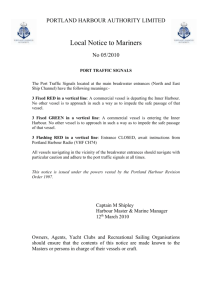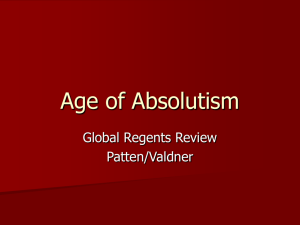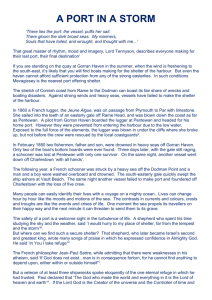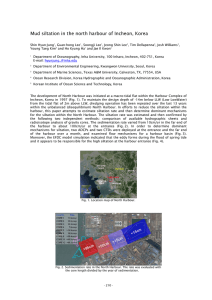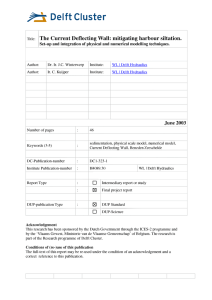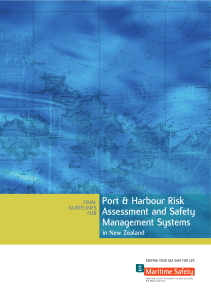A detailed hydrodynamic model for the port of Zeebrugge: a
advertisement
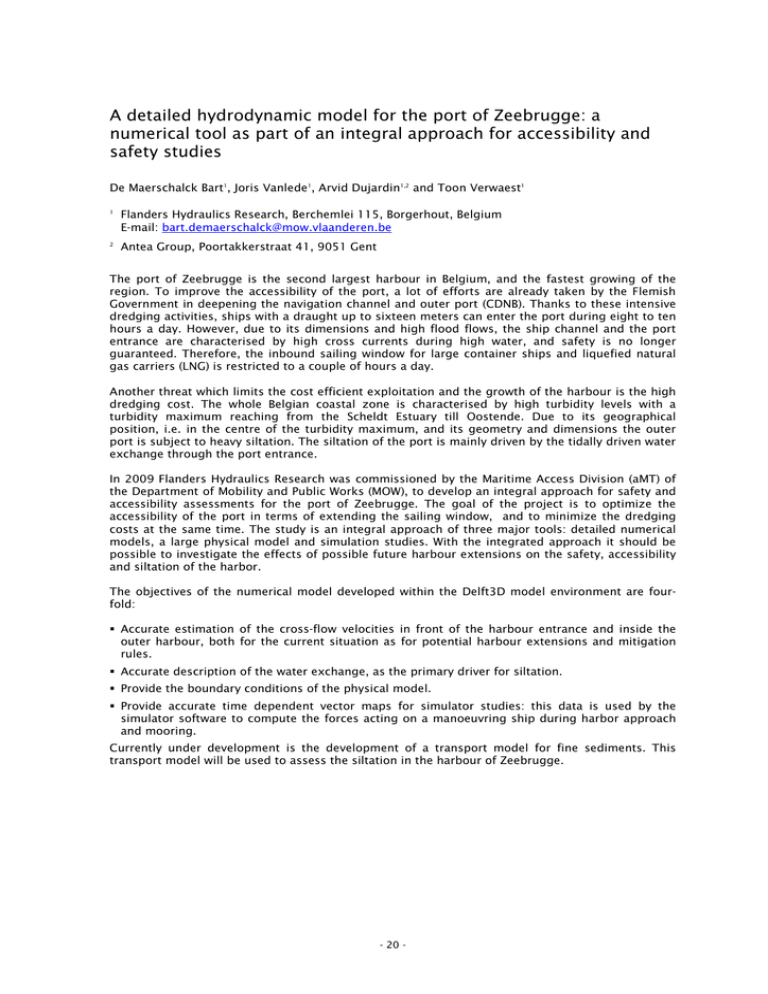
A detailed hydrodynamic model for the port of Zeebrugge: a numerical tool as part of an integral approach for accessibility and safety studies De Maerschalck Bart1, Joris Vanlede1, Arvid Dujardin1,2 and Toon Verwaest1 1 Flanders Hydraulics Research, Berchemlei 115, Borgerhout, Belgium E-mail: bart.demaerschalck@mow.vlaanderen.be 2 Antea Group, Poortakkerstraat 41, 9051 Gent The port of Zeebrugge is the second largest harbour in Belgium, and the fastest growing of the region. To improve the accessibility of the port, a lot of efforts are already taken by the Flemish Government in deepening the navigation channel and outer port (CDNB). Thanks to these intensive dredging activities, ships with a draught up to sixteen meters can enter the port during eight to ten hours a day. However, due to its dimensions and high flood flows, the ship channel and the port entrance are characterised by high cross currents during high water, and safety is no longer guaranteed. Therefore, the inbound sailing window for large container ships and liquefied natural gas carriers (LNG) is restricted to a couple of hours a day. Another threat which limits the cost efficient exploitation and the growth of the harbour is the high dredging cost. The whole Belgian coastal zone is characterised by high turbidity levels with a turbidity maximum reaching from the Scheldt Estuary till Oostende. Due to its geographical position, i.e. in the centre of the turbidity maximum, and its geometry and dimensions the outer port is subject to heavy siltation. The siltation of the port is mainly driven by the tidally driven water exchange through the port entrance. In 2009 Flanders Hydraulics Research was commissioned by the Maritime Access Division (aMT) of the Department of Mobility and Public Works (MOW), to develop an integral approach for safety and accessibility assessments for the port of Zeebrugge. The goal of the project is to optimize the accessibility of the port in terms of extending the sailing window, and to minimize the dredging costs at the same time. The study is an integral approach of three major tools: detailed numerical models, a large physical model and simulation studies. With the integrated approach it should be possible to investigate the effects of possible future harbour extensions on the safety, accessibility and siltation of the harbor. The objectives of the numerical model developed within the Delft3D model environment are fourfold: Accurate estimation of the cross-flow velocities in front of the harbour entrance and inside the outer harbour, both for the current situation as for potential harbour extensions and mitigation rules. Accurate description of the water exchange, as the primary driver for siltation. Provide the boundary conditions of the physical model. Provide accurate time dependent vector maps for simulator studies: this data is used by the simulator software to compute the forces acting on a manoeuvring ship during harbor approach and mooring. Currently under development is the development of a transport model for fine sediments. This transport model will be used to assess the siltation in the harbour of Zeebrugge. - 20 -
